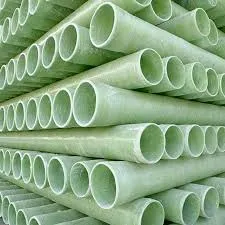
-
 Afrikaans
Afrikaans -
 Albanian
Albanian -
 Amharic
Amharic -
 Arabic
Arabic -
 Armenian
Armenian -
 Azerbaijani
Azerbaijani -
 Basque
Basque -
 Belarusian
Belarusian -
 Bengali
Bengali -
 Bosnian
Bosnian -
 Bulgarian
Bulgarian -
 Catalan
Catalan -
 Cebuano
Cebuano -
 China
China -
 China (Taiwan)
China (Taiwan) -
 Corsican
Corsican -
 Croatian
Croatian -
 Czech
Czech -
 Danish
Danish -
 Dutch
Dutch -
 English
English -
 Esperanto
Esperanto -
 Estonian
Estonian -
 Finnish
Finnish -
 French
French -
 Frisian
Frisian -
 Galician
Galician -
 Georgian
Georgian -
 German
German -
 Greek
Greek -
 Gujarati
Gujarati -
 Haitian Creole
Haitian Creole -
 hausa
hausa -
 hawaiian
hawaiian -
 Hebrew
Hebrew -
 Hindi
Hindi -
 Miao
Miao -
 Hungarian
Hungarian -
 Icelandic
Icelandic -
 igbo
igbo -
 Indonesian
Indonesian -
 irish
irish -
 Italian
Italian -
 Japanese
Japanese -
 Javanese
Javanese -
 Kannada
Kannada -
 kazakh
kazakh -
 Khmer
Khmer -
 Rwandese
Rwandese -
 Korean
Korean -
 Kurdish
Kurdish -
 Kyrgyz
Kyrgyz -
 Lao
Lao -
 Latin
Latin -
 Latvian
Latvian -
 Lithuanian
Lithuanian -
 Luxembourgish
Luxembourgish -
 Macedonian
Macedonian -
 Malgashi
Malgashi -
 Malay
Malay -
 Malayalam
Malayalam -
 Maltese
Maltese -
 Maori
Maori -
 Marathi
Marathi -
 Mongolian
Mongolian -
 Myanmar
Myanmar -
 Nepali
Nepali -
 Norwegian
Norwegian -
 Norwegian
Norwegian -
 Occitan
Occitan -
 Pashto
Pashto -
 Persian
Persian -
 Polish
Polish -
 Portuguese
Portuguese -
 Punjabi
Punjabi -
 Romanian
Romanian -
 Russian
Russian -
 Samoan
Samoan -
 Scottish Gaelic
Scottish Gaelic -
 Serbian
Serbian -
 Sesotho
Sesotho -
 Shona
Shona -
 Sindhi
Sindhi -
 Sinhala
Sinhala -
 Slovak
Slovak -
 Slovenian
Slovenian -
 Somali
Somali -
 Spanish
Spanish -
 Sundanese
Sundanese -
 Swahili
Swahili -
 Swedish
Swedish -
 Tagalog
Tagalog -
 Tajik
Tajik -
 Tamil
Tamil -
 Tatar
Tatar -
 Telugu
Telugu -
 Thai
Thai -
 Turkish
Turkish -
 Turkmen
Turkmen -
 Ukrainian
Ukrainian -
 Urdu
Urdu -
 Uighur
Uighur -
 Uzbek
Uzbek -
 Vietnamese
Vietnamese -
 Welsh
Welsh -
 Bantu
Bantu -
 Yiddish
Yiddish -
 Yoruba
Yoruba -
 Zulu
Zulu
rtrp pipe
Understanding RTRP Pipe Revolutionizing Pipe Systems in Modern Infrastructure
In the ever-evolving world of construction and engineering, the quest for advanced materials and technologies to enhance efficiency and durability is paramount. One such innovation that has gained traction in recent years is the RTRP (Reinforced Thermosetting Resin Pipe) pipe. This article explores the various facets of RTRP pipes, their advantages, applications, and their role in modern infrastructure.
What is RTRP Pipe?
RTRP pipes are composite pipes made from thermosetting resins reinforced with fibers, typically glass or other materials. This combination results in a pipe that boasts superior strength, corrosion resistance, and thermal stability. Unlike traditional metal pipes, RTRP pipes do not suffer from rust and degradation, which makes them particularly valuable in industries such as water supply, sewage treatment, and industrial fluid transport.
Advantages of RTRP Pipes
1. Corrosion Resistance One of the most significant advantages of RTRP pipes is their resistance to corrosion. Unlike metallic pipes, which can oxidize and weaken over time, RTRP pipes maintain their integrity, even in aggressive chemical environments. This characteristic extends the lifespan of the infrastructure, reducing the need for frequent replacements.
2. Lightweight and Easy to Handle RTRP pipes are considerably lighter than their metal counterparts. This lightweight nature not only makes transportation and installation easier but also reduces the overall load on structures. Consequently, construction projects can be completed more swiftly and efficiently.
3. Thermal Insulation The thermosetting resin used in RTRP pipes provides excellent thermal insulation. This quality helps in reducing energy consumption for heating and cooling applications and ensures that the fluids transported within maintain their desired temperatures.
4. Flexible Design RTRP pipes can be manufactured in various diameters and lengths, allowing for a high degree of customization. This flexibility makes them suitable for numerous applications, from residential plumbing systems to large-scale industrial operations.
rtrp pipe

5. Cost-Effectiveness While the initial investment for RTRP pipes may be slightly higher than traditional materials, their longevity, decreased maintenance needs, and superior performance can result in significant cost savings over time. This makes them a wise financial choice for many projects.
Applications of RTRP Pipes
The versatility of RTRP pipes means they find application in a wide range of industries. Some notable usages include
- Water and Wastewater Management RTRP pipes are ideal for the transport of drinking water and wastewater due to their non-corrosive properties. They are often used in municipal water systems, where long service life and low maintenance are crucial.
- Chemical Processing The chemical industry utilizes RTRP pipes to transport corrosive substances. Their resistance to a variety of chemicals ensures that they surpass the performance of traditional materials, making them a preferred choice in chemical processing plants.
- Oil and Gas RTRP pipes can also be used in oil and gas applications, where exposure to harsh environments necessitates durable and reliable piping solutions. Their light weight aids in the installation process, even in remote locations.
- Telecommunications In some cases, RTRP pipes are used as conduits for telecommunications, protecting sensitive cables from external damage while providing a lightweight solution for underground installations.
Conclusion
In conclusion, RTRP pipes are a remarkable advancement in piping technology, offering numerous advantages that make them a strong alternative to traditional materials. With their exceptional durability, resistance to corrosion, and lightweight structure, RTRP pipes are poised to play a significant role in modern infrastructure. As industries continue to seek out efficient and sustainable solutions, the adoption of RTRP pipes is likely to increase, paving the way for more resilient and cost-effective systems across various sectors. The future of infrastructure depends on innovations like RTRP, ensuring that we build stronger and more reliable systems for generations to come.









